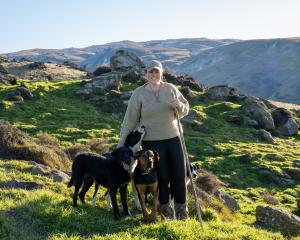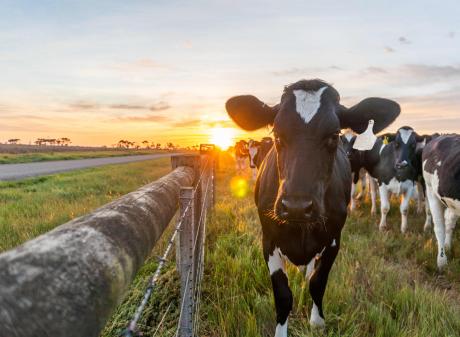
The finalists are Nigel and Leanne Woodhead (South Otago), Francois and Shelley Tillard (North Otago), Andrew and Tracy Paterson (Central Otago) and Matt Lawlor and Teresa O’Riordan (South Otago).
Mr and Mrs Woodhead own a sheep, beef and forestry operation which they started leasing from Mr Woodhead’s parents in 2015. Eight years later, they bought the 400ha (380ha effective) property.
They run 2000 ewes, 550 hoggets and 60 bulls across 250ha of the property. A forestry block covers the remaining 130ha with 80ha of that planted in the last two years.
The awards citation said the farm’s productivity had improved year-on-year from being adaptable and implementing new strategies, despite external pressures.
By expanding the forestry block, the couple further diversified the business and made use of vulnerable land. It built on their crop diversification where different management practices were used to boost production while minimising environmental impact.
The couple had a strong understanding of soil health and nutrient management. They used minimum tillage practices to reduce soil erosion and compaction, and did regular soil testing to optimise fertiliser use and reduce inputs.
The judges were particularly impressed with their comprehensive approach to winter grazing management, including detail paddock plans and thorough record-keeping.

They have been 50:50 equity partners in the farm since 2022.
They operate a year-round milking business with a peak herd size of between 650 and 800 cows across the 206ha (196ha effective) property. They also run a total of 150ha lease run-off blocks.
A focus on efficiency and innovative irrigation solutions has been a key to their success and they have invested significantly in irrigation infrastructure and have plans for further expansion.
Soil health was a priority and they ran a robust nutrient management programme. By composting sawdust and other organic matter, they captured and used nutrients that would otherwise be lost.
They also had a strong focus on the wellbeing of their team, ensuring they were supported and protected by what the judges described as an exemplary health and safety plan. That included monthly meetings chaired by a third party and annual audits, ensuring the working environment was safe. Waterways were protected by significant riparian fencing and planting.

Across the 5300ha (4000ha effective) freehold area of their land, they run 22,000 Polwarth sheep, supplying their wool for use in high-end brands, and finish lambs. They also run 1100 Hereford cattle for beef and derive income from a Polwarth stud.
The couple have invested heavily in irrigation, fencing and pasture development as well as building on the already well-established stud programme. More than 6ha of wetlands had been restored and partially planted while a further 24ha would be enclosed this year. Water quality was monitored and managed.
The couple were working with their neighbour to protect about 132ha of totara with a QEII Trust covenant. Once complete, it would be one of the biggest stands of alpine totara in Otago.
Looking to the future, they were exploring hydro-electric and solar power generation to enhance the property’s resilience.

The couple run 4500 ewes and 200 cows, breeding and fattening the progeny, on the 1220ha (1000ha effective) farm.
When taking over, they wanted to create a place for their family to grow up, backed by a healthy and profitable business. The judges were particularly impressed with the family’s successful weed control efforts, especially their comprehensive approach to gorse control.
Caldervan boasted a significant area of native bush and tussock grasslands, which the family actively protected. The judges said their dedication to on-farm biodiversity was evident in their efforts to integrate those natural areas into their farming system.
Extensive riparian planting and fencing have been implemented, along with the establishment of wetland areas. The couple demonstrated a strong understanding of soil health and its importance to the overall environment.
They maintained a comprehensive farm plan with detailed maps of soils, landscapes and farm features, along with specific action plans for each area. Using direct drilling methods where appropriate for establishing crops further reduced soil disturbance.
— APL















